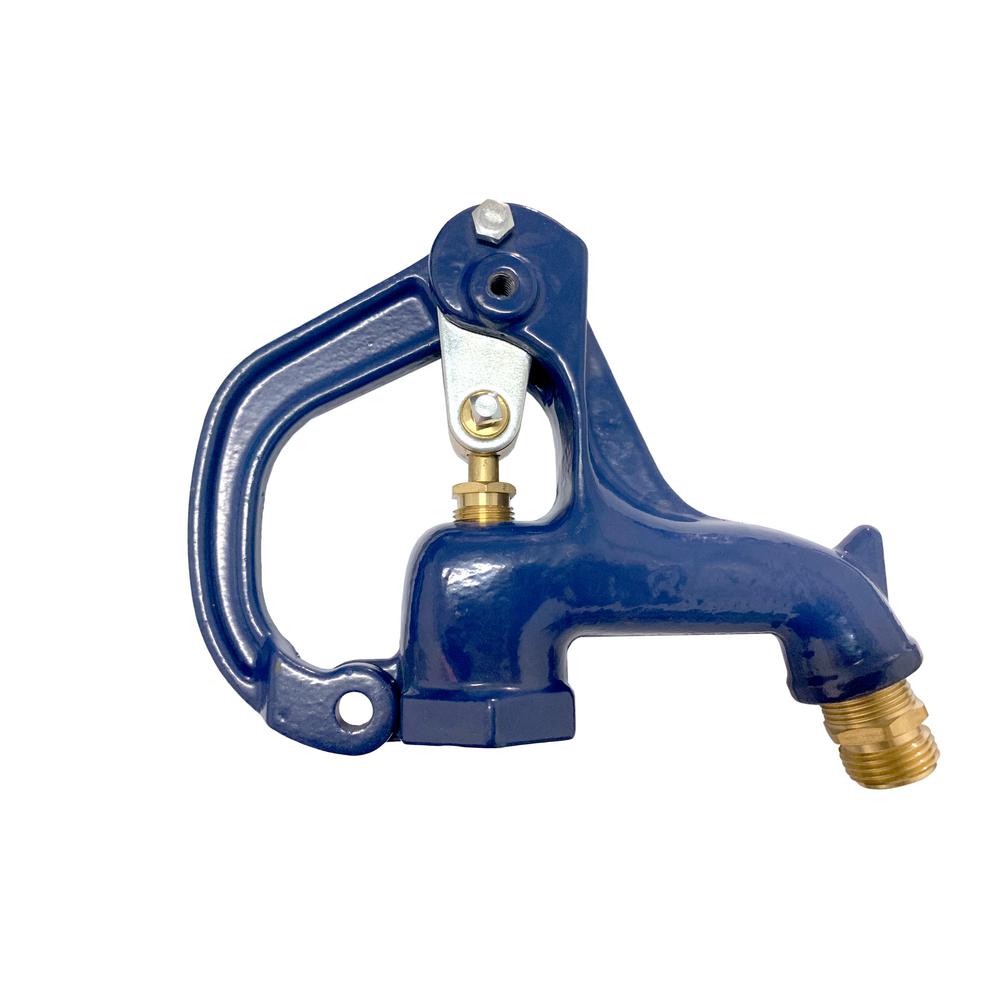

If the hydrant still leaks, or if the rod is damaged, you may need to dig up and replace the yard hydrant. Turn the water back on and check for leaks. Retighten the setscrew and/or packing nut, if applicable. Tighten the head so it is snug and facing the desired direction. Apply new plumber’s tape to the threads, then screw the hydrant head onto the standpipe. Reinsert the pump rod into the standpipe until the plunger is fully against the valve seat at the bottom of the standpipe.Ĭlean off any old plumber’s tape or pipe-joint compound from the standpipe threads. Do not use petroleum-based lubricants, which can damage the seal. Some replacement plungers come pre-lubricated, but if yours is not, coat the assembly with silicone waterproof plumber’s grease to help it slide down into the standpipe.
#RED FROST PROOF YARD HYDRANT COMPLETE HEAD ASSEMBLY INSTALL#
Install the new plunger and secure it with the screw. Replace the plunger in your yard hydrant by unscrewing the old plunger from the end of the rod using a screwdriver. If necessary, grip the rod with pliers to remove it use pliers only on the outer portion of the rod, not on the brass spindle. Aaron StickleyĬarefully pull up and remove the long pump rod from inside the standpipe. Do not remove the setscrew or packing nut just loosen them. On some hydrant models, you must loosen a linkage setscrew and/or a packing nut on the head before turning the head. If the head won’t budge, apply some penetrating oil to the pipe threads under the head, wait a few minutes for the oil to penetrate, and try again. The wrenches should face in opposite directions. Place one wrench on the standpipe to hold it in place and keep it from turning, and use the other wrench to grip the hydrant head and unscrew it. Remove the hydrant head from the standpipe, using two pipe wrenches. If there’s no shutoff valve on the individual water line, you can turn off the water at your home’s main shutoff valve. Look in the basement or crawlspace for lines that exit the house into the ground (water hydrant lines are buried below the frost line, the depth to which the ground freezes in winter). There may be a shutoff valve directly on its water line. Shut off the water supply to the hydrant. Check with the manufacturer or shop for parts online or through a local plumbing supply house. Many hydrant manufacturers offer yard hydrant repair kits for their products, and many repair kits are universal to fit a variety of brands. There are many types of hydrants, and it’s important to get the exact replacement parts for your model. Yard hydrant plunger replacement is a simple and quick repair to ensure your hydrant remains leak-free and to prevent bursting. But if a leaky hydrant is not fixed, it can be susceptible to bursting, since water remains inside the standpipe. Since no water remains in the pipe, it cannot freeze and cause the pipe to rupture. However, when the pump rod and plunger are lowered down to close against the water inlet, the drain port is opened and any water in the standpipe drains away into the ground-the surrounding area is usually packed with gravel to facilitate drainage. When the pump rod and plunger lift away from the valve seat, this drain port is blocked, forcing water to flow up the standpipe. What makes a hydrant frost-proof is its design variation that features a drain port built into the bottom of the valve. Raising the hydrant handle lifts the plunger up away from the water inlet, allowing water to flow up the standpipe and out the spigot. The valve is designed so that when the hydrant’s handle is lowered, the pump rod and plunger are squeezed down onto the water inlet, stopping the flow of water. At the bottom end of the pump rod is a plunger with a rubber washer or seal fitted to the end. The hydrant is a specialized type of faucet that uses a fulcrum-type lever to raise and lower a long pump rod (sometimes called an operating rod or riser rod) inside the standpipe. The standpipe is typically a 1-inch diameter galvanized pipe that is threaded at the top.Īt the top of the standpipe, usually 3 to 4 feet above the ground, the hydrant head is screwed onto the pipe. The actual valve body is located at the junction where the horizontal pipe turns upward into a vertical standpipe. The horizontal water pipe running out to the hydrant location from the house must be buried deep enough to be below the frost line, which in some climates can be 4 feet or more below ground. 5 Instructions How a Frost-Free Hydrant WorksĪ frost-free hydrant can be thought of as a very long compression faucet.


 0 kommentar(er)
0 kommentar(er)
